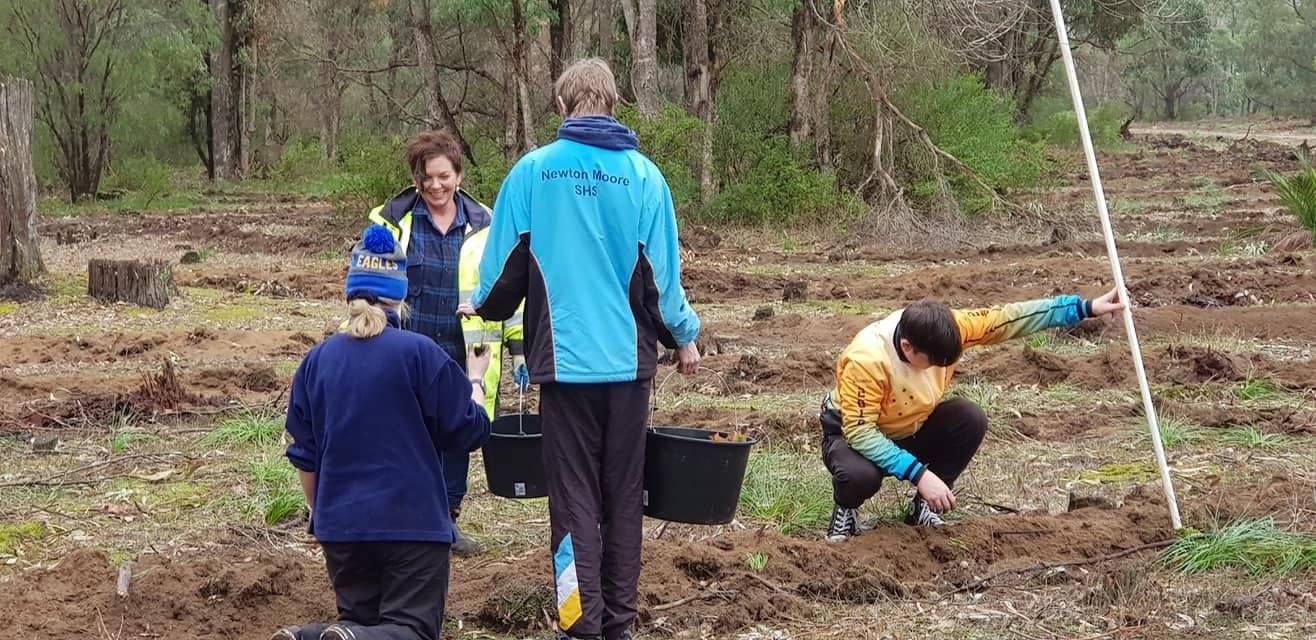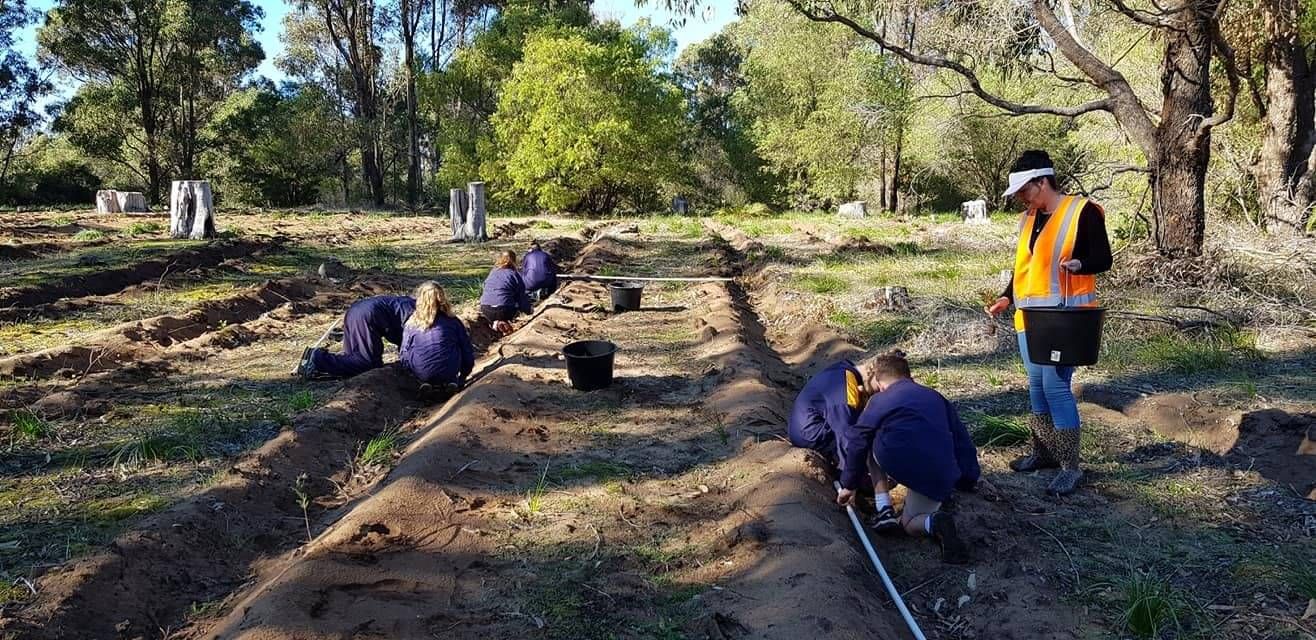Ludlow Tuart Forest Restoration
What will it look like when finished?
The result will be a fully stocked dominant tuart forest of immense biological and human value.
It will be a world class example of forest restoration for all values, including Carbon capture, protection, tourism, recreation, education, heritage, clean air and water management.
Why do we care?
- Tree planting is a positive step towards climate change mitigation. Trees collect carbon from the atmosphere and store it in the wood structure. Trees give off oxygen, provide habitat for a huge variety of biodiversity including plants, birds, animals micro flora and humans. Trees also provide for modern human daily existence and need for food, fuel, fibre and a sense of wellbeing.
- This tuart forest, the only forest of its kind in the world has been reduced from over 100,000 hectares in 1838 to a miserable 3,300 hectares today. The world population would be outraged. This forest has equal value to the treasured Wollemi Pine and deserves the same respect, funding and protection together with restoration.
History
- The forest was harvested for timber exports for the first 70 years after settlement and progressively cleared for agriculture. Later, following a royal commission in 1906, some areas were repurchased by government and planted back to pine, starting in the 1920’s. Tuart timber harvesting ceased in 1975.
- During the last 100 years the forest has continued to be eroded for agriculture, horticulture, urbanisation, mining and a host of debilitating options.
- Forest management for all values has been abandoned and now the majority of the area is locked away under world heritage national park status that simply prevents any meaningful management of the area forever.
How to grow a tuart forest
- Tuart seedlings will not compete with introduced grasses. (This issue applies to all native plants.) Control of weeds prior to planting and during the first 5 years after planting is mandatory. There are proprietary chemical treatments available to eliminate weeds. It is best to treat the whole of the area to control weeds prior to planting.
- Site preparation is most important to give young seedlings the best chance of establishment and survival. Plants are best established in rows for ease of maintenance. The rows do not necessarily need to be straight lines but can be any desirable form so long as they are continuous and can be formed mechanically with tractor and three point linkage furrow liner plough to create a deep ripped weed free furrow to promote moisture collection and early plant protection from wind.
- Young seedlings are favoured as a food source by rabbits and kangaroos or domestic animals. The trees must be protected from all herbivores for the first 5 years. This will involve upgrading and maintaining fences to rabbit, kangaroo and domestic animal exclusion status.
- Young tuart seedlings are best planted out after at least 8 months of age, it is important high quality seed is used and best collected from selected trees in the adjoining forest areas. Plants raised in registered nurseries, free of pathogens are desirable. Boyanup Botanical Nursery is one supply option.
- For the first 2 or 3 years the young trees are susceptible to insect damage and regular inspection for damage to foliage will tell if control methods are necessary.
- The site will probably have a residual fertiliser bank. A simple soil test will determine missing elements that can be corrected immediately after planting by applying a formulated, pelletised fertiliser to each plant.
- Plants need to be planted in close proximity to ensure a tall attractive final crop is achieved. A row spacing of 2.5 meters with plants established in the rows on 2.5 meter spacing will provide a stocking of 1,600 seedlings per hectare. This density may need to be maintained after the 1st year by replacing any failed plants.
- The trees must be allowed to grow on until crown cover is achieved around 15 years. It is then time to thin the stand selecting the trees to be retained based on vigour, form, height and spacing. The culls can be sold as biomass or chipped on site and distributed as mulch or simply left on the ground to naturally decay. Thinning is ongoing over time and has best effect when the stand closes canopy. Tuart trees need space for crowns to develop but need not be given too much space as the ability to grow tall will be lost and short dumpy spreading crown, multiple limbed trees will result.
- Once thinning is settled it is possible to introduce understory native plant species to attract small birds and animals. The introduction of understory plants to early is counterproductive and results in moisture stress, nutrition loss and crop tree decline. It also creates an unnecessary fuel load making fire management difficult.
- Fire management is a further consideration and it is desirable to burn leaf litter beneath the trees at regular intervals of not more than 4 -5 years after age 5.
Notes:
Regular fuel reduction fire will not harm the trees if carried out in the spring or autumn after rain in a surface drying litter in the cool of the evening. The purpose of fire in this situation is simply to reduce fuel load as a safety consideration. All Australian eucalypts are mild fire tolerant.
Feedback form



